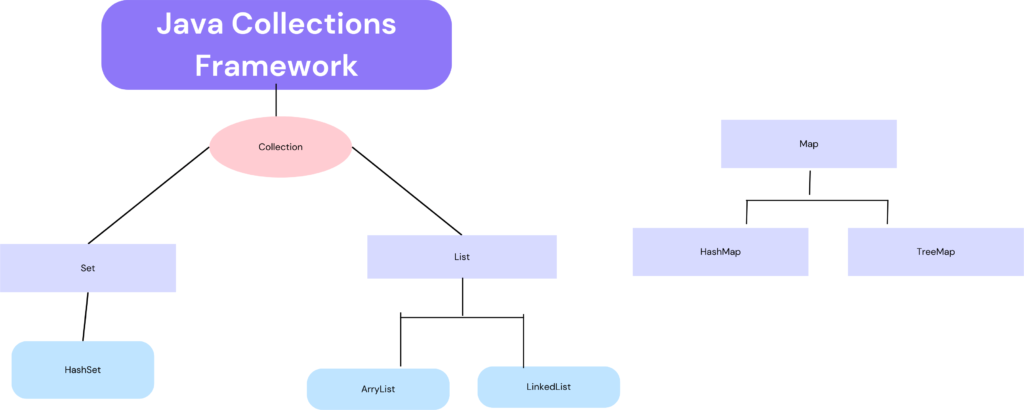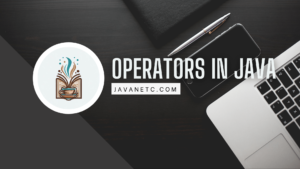Introduction:
Welcome to the world of Java Collections Framework, a robust and essential part of Java programming that empowers developers to manage and manipulate collections of objects seamlessly. In this comprehensive guide, we will delve deep into the intricacies of the Java Collections Framework, exploring its key components, methods, and best practices.
Table of Contents
Understanding the Basics of Java Collections Framework

What is Java Collections Framework?
Java Collections Framework (JCF) is a fundamental part of the Java Standard Edition (SE) library that provides a comprehensive set of interfaces, implementations, and algorithms for handling and manipulating collections of objects.
Why Java Collections Framework?
Efficient data manipulation is critical in software development, and JCF offers a standardized way to achieve this by providing a set of classes and interfaces that streamline the storage and retrieval of data.
Key Components of Java Collections Framework
1.Interfaces
JCF includes several core interfaces like List, Set, and Map, each serving a unique purpose. These interfaces lay the foundation for the implementation classes that developers use to create specific types of collections.
2.Classes
The framework provides various classes such as ArrayList, LinkedList, HashSet, and HashMap, which implement the core interfaces, offering different ways to store and organize data.
3.Algorithms
Java Collections Framework comes equipped with a wide array of algorithms for searching, sorting, and manipulating collections. Understanding these algorithms is crucial for optimizing performance in different scenarios.
Exploring Java Collections Framework in Depth
List Interface and Implementations
1.ArrayList
Description: An implementation of the List interface using a dynamic array.
Benefits: Fast random access, efficient for read-heavy operations.
Use Case: Ideal for scenarios where elements need to be accessed frequently.
2.LinkedList
Description: A doubly-linked list implementation of the List interface.
Benefits: Efficient for add and remove operations, especially in scenarios involving frequent insertions or deletions.
Use Case: Suitable for scenarios requiring dynamic data manipulation.
Set Interface and Implementations
1.HashSet
Description: Implements the Set interface using a hash table.
Benefits: Provides constant-time performance for the basic operations (add, remove, contains).
Use Case: Perfect for scenarios where uniqueness of elements is crucial.
2.TreeSet
Description: A NavigableSet implementation based on a red-black tree.
Benefits: Guarantees sorted order of elements, efficient for range queries.
Use Case: Useful when elements need to be maintained in a specific order.
Map Interface and Implementations
1.HashMap
Description: Implements the Map interface using a hash table.
Benefits: Fast retrieval and insertion, constant-time performance for basic operations.
Use Case: Ideal for scenarios requiring key-value pairs with quick access times.
2.TreeMap
Description: Implements the Map interface using a red-black tree.
Benefits: Guarantees sorted order of keys, suitable for scenarios requiring key-based navigation.
Use Case: Useful when key-value pairs need to be maintained in a specific order.
Best Practices for Using Java Collections Framework
- Choose the Right Collection Type
Select the appropriate collection type based on the specific requirements of your application. Consider factors such as access patterns, data size, and the need for sorted or unsorted collections. - Be Mindful of Performance
Understand the performance characteristics of different collection types. For example, ArrayList provides fast random access but may not be the most efficient for frequent insertions or removals. - Pay Attention to Thread Safety
While Java Collections Framework provides synchronized versions of certain classes, consider using concurrent collections or external synchronization for thread safety, especially in a multi-threaded environment.
SEO Best Practices
To enhance the SEO-friendliness of your content, ensure that the focus keyword “Java Collections Framework” is naturally integrated throughout the blog post. Include it in headings, subheadings, and the body of the text. Additionally, use related keywords like “Java Collections,” “Java List,” “Java Set,” and “Java Map” to broaden the scope and relevance of your content.
Conclusion
Mastering Java Collections Framework is indispensable for Java developers aiming to build efficient and scalable applications. By understanding the nuances of different interfaces and implementations, you can make informed decisions about selecting the right collection types for your specific use cases. With the insights gained from this guide, you are well-equipped to leverage the power of Java Collections Framework and elevate your programming skills to new heights. Happy coding!



